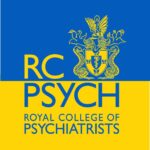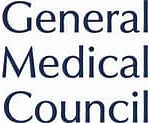Depression
Depression in Children and adolescents
Depression in Children and adolescents
Depression is a mental health condition characterized by persistent feelings of sadness, hopelessness, and a lack of interest or pleasure in activities once enjoyed. It can affect how someone thinks, feels, and behaves, and may lead to physical symptoms like fatigue, changes in appetite, or sleep disturbances.
Predisposing Factors
Depression in children may arise due to a complex interplay of genetic, biological, environmental, and psychological factors:
- Genetic: A family history of mood disorders (depression, bipolar disorder) increases the risk.
- Biological: Neurochemical imbalances, such as low serotonin or dopamine levels, can be contributing factors.
- Environmental: Stressful life events, trauma, abuse, neglect, parental separation, or family dysfunction can increase the risk.
- Temperamental: Children with a history of emotional dysregulation or temperament-related difficulties may be more predisposed.
- Psychosocial Factors: Peer rejection, bullying, academic pressure, or conflicts within the family can contribute to mood disturbances.
- Medical Conditions: Chronic illness, neurological disorders, or hormonal imbalances may exacerbate mood symptoms.
Symptoms
Depression in children often presents differently than in adults, and the symptoms may be harder to identify, especially in younger children.
- Irritability or anger instead of sadness (especially in younger children).
- Low energy or fatigue.
- Changes in sleep patterns (e.g., trouble falling asleep or excessive sleeping).
- Appetite changes (either overeating or loss of appetite).
- Difficulty concentrating or poor academic performance.
- Feelings of worthlessness or guilt.
- Somatic complaints (headaches, stomach aches) without clear medical causes.
- Withdrawal from social activities and peer relationships.
- Suicidal ideation (in severe cases, especially in older children or adolescents).
Diagnosis
The diagnosis of depression in children typically involves a comprehensive assessment:
Observation of the child’s behavior, interaction with peers and adults, emotional regulation, understanding the child’s developmental milestones and any previous psychological or emotional issues and medical Evaluation: To rule out any underlying medical conditions (e.g., thyroid issues, vitamin deficiencies, neurological disorders) that could be contributing to mood disturbances.
Treatment
Cognitive Behavioral Therapy (CBT): Often the first-line treatment for depression and anxiety in children.
Interpersonal Therapy (IPT): Focuses on improving interpersonal relationships and social functioning, which may help children with mood disorders.
Family Therapy: Can be beneficial, especially when family dynamics contribute to the child’s emotional difficulties.
Play Therapy: For younger children, play therapy is a way for children to express their feelings and work through emotional distress in a more developmentally appropriate way.
Medication
Antidepressants: Sometimes medication is recommended alongside therapy for severe presentation or where impairing symptoms persist despite engaging in therapy.
Lifestyle Modifications
Regular Routine, Social Skills Training: for children struggling with social difficulty managing peer relationships.
Parental support: Parents may receive guidance on how to best support their child’s emotional and behavioral needs.
School Support; Reasonable adjustment in the classroom to reduce stress e.g extra time for assignments can be helpful.


